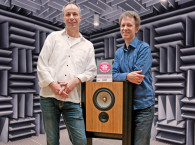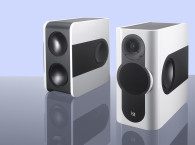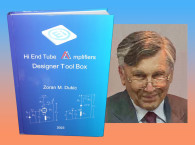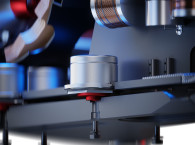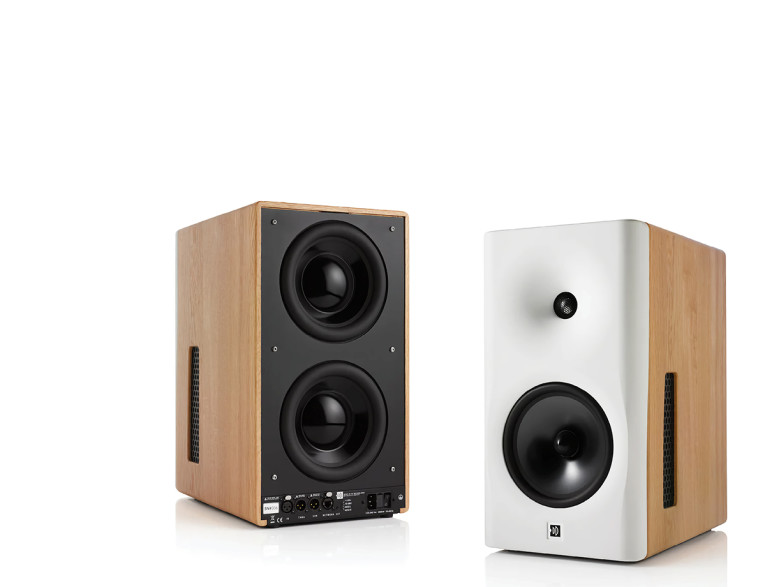
Located at the confluence of several major rivers in Rotterdam, The Netherlands, I spent a day with the team listening, talking, and philosophizing. I spoke directly with Martijn Mensink, the company’s founder and “acoustic brain,” whose passion for audio stems from his love of music, which he considers to be the most universal and emotionally stirring art form.
During his teenage years, Mensink had a transformative experience listening to his neighbor’s high-end system, igniting his interest in audio. He pursued a dual education in physics and entrepreneurship, and throughout his university years, he immersed himself further in the audio world by working part-time at a high-end hi-fi store and starting his first audio company with friends from university. It was in this period that he discovered the concept of embracing room acoustics instead of fighting it.
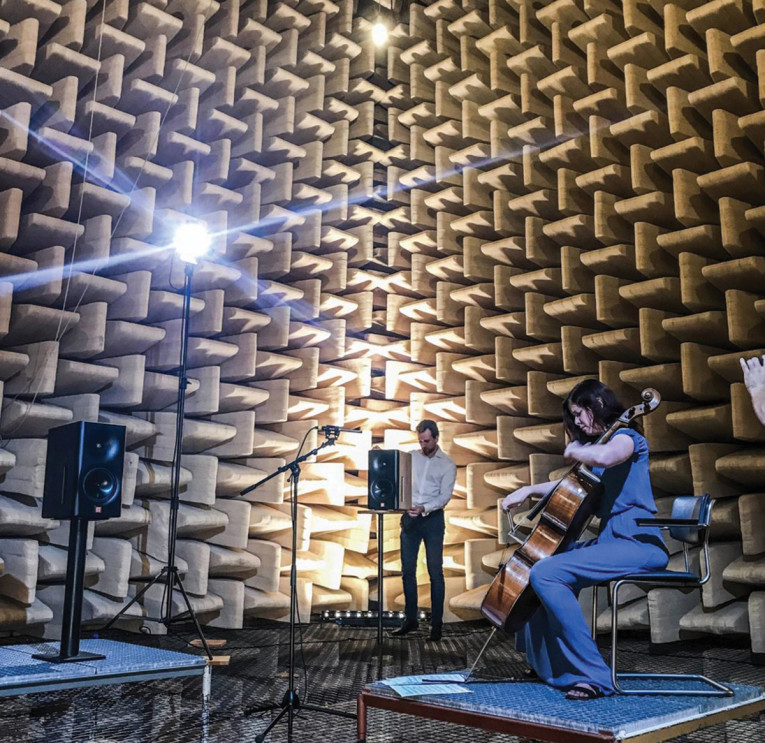
The Foundation
At age 16 , Mensink learned that, when it comes to sound quality, the most important components of an audio system are the speakers. As he didn’t have the money to buy better ones, he decided to build his own. The result was less than satisfying, and, with a group of friends from university, he decided to initiate a sort of collaborative competition to design the “best” speaker.
“At the time, I had my own listening room at my parents’ home. We built a lot of speakers and one takeaway for me was that the audio electronics were not the primary determining factor in sound quality, but the speaker was,” Mensink shares.
Another key insight came from the years he worked for an audio dealer in the East of The Netherlands where he did equipment delivery and demonstrations at the store and customers’ homes. “I began to see a trend: Many customers started buying what they thought was the ultimate system. But after a time, they would get a feeling that something wasn’t quite right, that something was missing. They would come back and purchase a new system, speakers, amplifiers, cables… hoping to find Nirvana this time. The company I worked for made a policy of accepting returns of previously sold equipment, to facilitate this.”
“So, they took the new system that sounded so great in the showroom, set it up at home and, as is the way our brain works, would be very happy. Until, after some time they would again start to hear some shortcomings, and the cycle was repeated. Often, they were told that they should try a different speaker/amplifier combination, or exchange speaker cables, but I was skeptical about those seemingly simple solutions. Indeed, the new amplifier delivered much “faster” and cleaner lows! At first, at least, because, as I started to learn, after some time the doubts would inevitably reappear and another trip to the dealer was planned.”
At the same time, this was a sort of business model for these companies. Encouraging a customer’s hobby as a social ritual; to meet at the store, exchange stories, have a coffee together and have a good time. “This was always based on an underlying dissatisfaction, and at a certain point I asked myself, what’s going on here? I came to the realization that the core basic issue was in the interaction of the speaker and the listening room. In the store we’d demo a nice floor stander, standing relatively free in a large space and it sounded fantastic. The customer then took the speakers home and positioned them where the space was available; a space that was almost always a lot smaller. The speakers ended up against a wall or in a corner and that didn’t work, of course. This fundamental problem of how the speaker interacts with the room acoustics is almost universally ignored.”
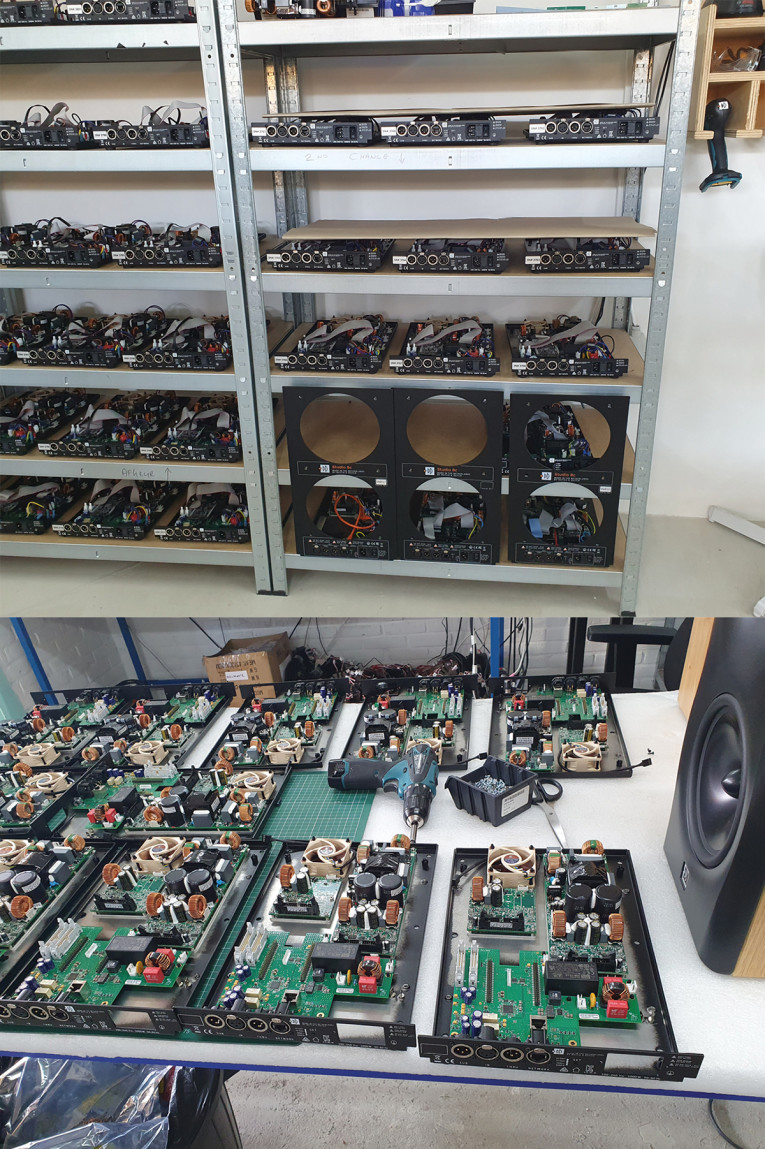
At that time, Mensink experienced the problem himself when he moved in with his girlfriend and got a pair of speakers that he thought were marvelous but couldn’t get them to perform well in his living room. That’s when he got back together with his friends from university and challenged them to try another approach.
Essentially, he realized that first, it’s the combination of the speaker and the room that determines how it sounds. Second, the room is a given. Yes, a room can be treated for its most glaring acoustic problems, but it is not always possible in a family setting and its impact in the room aesthetics will hardly meet the “Spouse Acceptance Factor”—a very important criteria in every household. It was this realization that convinced Mensink to embark on the development of a speaker that would “adapt to the listening room, no matter how bad that room was” (within limits of course).
“My Dutch & Dutch business partner, Kevin Kleine, calls it ‘room judo.’ You use the ‘power’ of the room to work around its limitations.”
“We succeeded in developing a system that worked quite well in my room. It was a complex system — satellite speakers and multiple subs, lots of wires and preamps and amps and DSP boards. We had a demo set, which we took around to prospective customers. There were a few challenges. First, we had to convince people that they had a problem. Then, we needed to convince them we had a solution. Then we showed up with a minitruck full of amps, subs, speakers, DSP boxes, and a lot of cables, taking a few hours to set it up. Next was tuning it with buggy DSP software — you get the point… It was what they call a ‘hard sell’.”
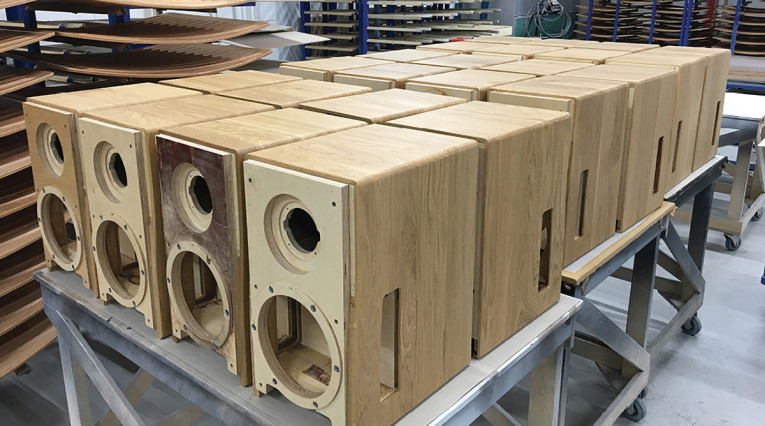
“We had given a lot of money to an outfit to develop tooling for series production, and they went bankrupt and took our money with them… That was a real low in my life, and I was not sure what to do next. But then I was approached by someone who was looking for somebody who a) knew a thing or two about speakers; and b) had some idea of how to run a business.
“I had just completed a master’s in business and entrepreneurship, and already had the invaluable experience of what it means and how it feels to go bankrupt! After some wandering around, we pivoted (as it’s often called in startups), and we decided to restart my previous project, as it had proven its basic soundness from an audio reproduction point of view. But it had to be simplified. It needed a lot of work to make it simple to use, easy to set up, and ideally just a pair of speaker boxes and nothing else. We needed to make it much more user friendly and get rid of the cable salad and separate amps and DSP boxes. That is how the 8c finally became the all-in-one speaker that it is, including all amplification, power supplies, A-D and D-A conversion where appropriate, and DSP processing. All electronics find their place in the bottom part of the enclosure, in an EMI-screened compartment.”

The Dutch & Dutch 8c is a speaker that is immediately striking in any of the available finishes and materials, which contributes to the appeal of the overall design—modern and clean. This appearance doesn’t detract from the fact that it is a fully integrated system, more like a platform that combines a lot of technology. Mensink shared more details of that product development for us.
“I already knew from the previous project that the best way to shape the speakers’ dispersion pattern was with a waveguide tweeter and a cardioid pattern on the woofer. The tweeter on the front panel is augmented with a midrange, which has its own internal enclosure and a pair of tuning slots on the sides. Those side vents produce a wavefront that is derived from the back energy coming off the midrange driver, to cancel out the midrange energy that tends to bend around the cabinet corners. In this fashion, the side and backside of the loudspeaker cabinets do not produce net energy and therefore do not excite the listening room with reflections,” he explains.
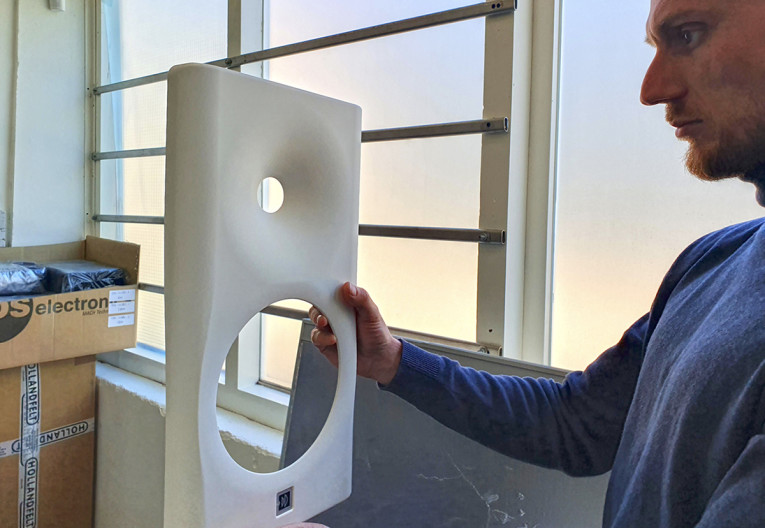
The small box of the 8c holds a total of 1kW of amplifier power! There is an analog XLR input which can be adjusted for two sensitivities (+4dBu or -10dBV). Another XLR provides an AES3 digital input with a Left-Right-Mono selection switch. There’s also an analog XLR output for further processing or if you wish to connect a separate subwoofer. The connection for the streaming functionality uses Ethernet though an RJ45 connector.
One of the key aspects of the 8c recipe is that there are a pair of woofers on the back. This allows the speaker to be placed relatively close to the rear wall. Not only can the owners of these speakers place them where it is usually more convenient for them, Dutch & Dutch recommends that they do it. The woofers radiate onto that real wall and their output is reflected, which acts as if there is an extra pair of woofers.
“We do adjust the timing in the DSP to correct for the shift of the virtual source of those woofers due to the reflection. This is an ideal setup, as the user can set the rear speaker-to-wall distance in an app. The speaker and the wall are time-aligned and become a single system. This so-called boundary coupling avoids the usual destructive interference between the direct sound and the reflected sound and increases the low-frequency headroom by up to 6dB. It also increases the directivity in the low-frequency region, to match that of the cardioid midrange that takes over above 100Hz,” Mensink explains proudly.
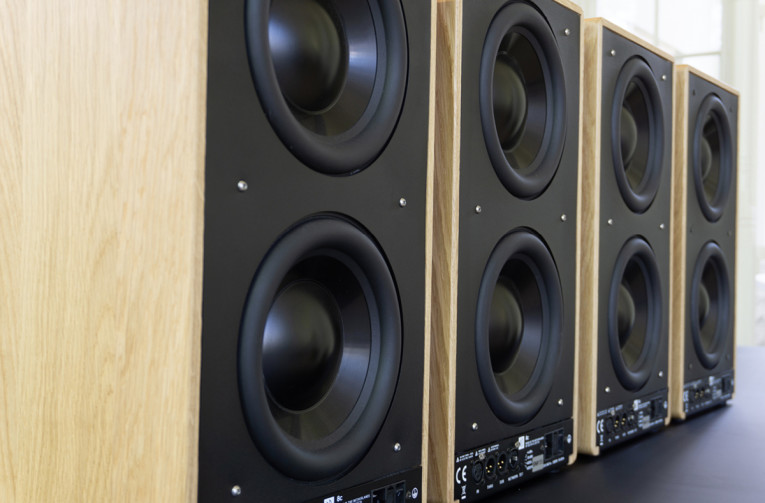
Rather than fight the acoustics of your room as most speakers do, the Dutch & Dutch 8cs are designed to work in concert with the room. Thanks to technologies such as the cardioid midrange and boundary coupling in the bass, the 8cs can be placed close to walls, or even in the corner. They can be used in big rooms or small ones — the 8cs basically don’t care and will deliver great sound regardless. And besides the acoustic technologies, the 8c has a DSP on board that is used to adapt the way the 8cs radiate their sound to the room and the placement in the room. Dutch & Dutch calls this RoomMatching. There are settings to adjust to nearby boundaries, and you can even correct the room modes.
So, there you have it, the waveguide tweeter operates above 1.25kHz, the cardioid midrange works in that range down to 100Hz, and the Boundary Coupled Bass woofer system takes over below that. And while the distance to the rear wall can now be compensated for as far as the sound pattern is concerned, you still do get an increase in available low-frequency power as you move the speaker closer to the rear wall. Room Judo — using the room’s strength to conquer it! After the 8cs are automatically discovered on the local area network (LAN), using the control app users have full control of settings like gain, distance to front and side walls, updates and many parametric filters. Internet connectivity is not even required.
To optimize the whole system, Dutch & Dutch recommends doing acoustic in-room measurements in the listening area with Room EQ Wizard (REW), calculate correction filters for room modes and shoot those straight into the 8cs via the LAN.

To do this, Dutch & Dutch worked with John Mulcahy, the creator of the software, to integrate the 8c with REW. All that is needed is a computer with REW and a USB measurement microphone, such as the miniDSP UMIK-1. When RoomMatching is done for a certain listening position in your room, you won’t have to touch it anymore. However, you can make multiple RoomMatching Profiles for multiple listening locations, or larger listening areas. Normally, users can create a RoomMatching Profile for the main listening position, one that sounds good throughout the room, and one that sounds great when working from home behind your desk.
The control app will allow you to add the proverbial salt and pepper, by changing the tonal balance to your liking with some EQ functions. Even better: users can select a particular “voicing” to support events such as parties or a romantic evening when neutral reproduction is not a requirement.
Dutch & Dutch also realized that this controlled cardioid dispersion would be very valuable in recording studios and other Pro Audio related settings. That explains why there are two slightly different 8c types: 8c and 8c Studio. The differences are mainly related to the available color combinations, streaming capability, and the availability of a flying mounting for the Studio type.
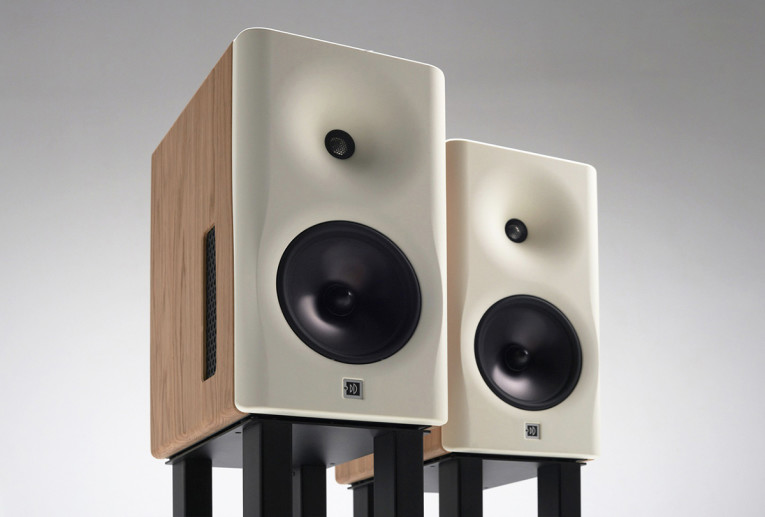
Keeping the Speakers in Sync
Signal distribution to the speakers is a mix of wireless and Ethernet. The two speakers are connected through an Ethernet link to the customer’s router. As mentioned, the user interface is running on an app on a smartphone, tablet, or PC. That opens the whole world of streaming, NAS storage, and local storage to the listener. A key issue in such a setup is keeping the two speakers synchronized, with all the unpredictable network delays and often variable latencies on the router/ Ethernet connections. Dutch & Dutch has spent considerable efforts to solve that problem. “We start by giving each audio frame a time stamp, so we can ensure that each sample is being replayed at exactly the correct instance in time,” explains Kleine, Dutch & Dutch’s software guru.
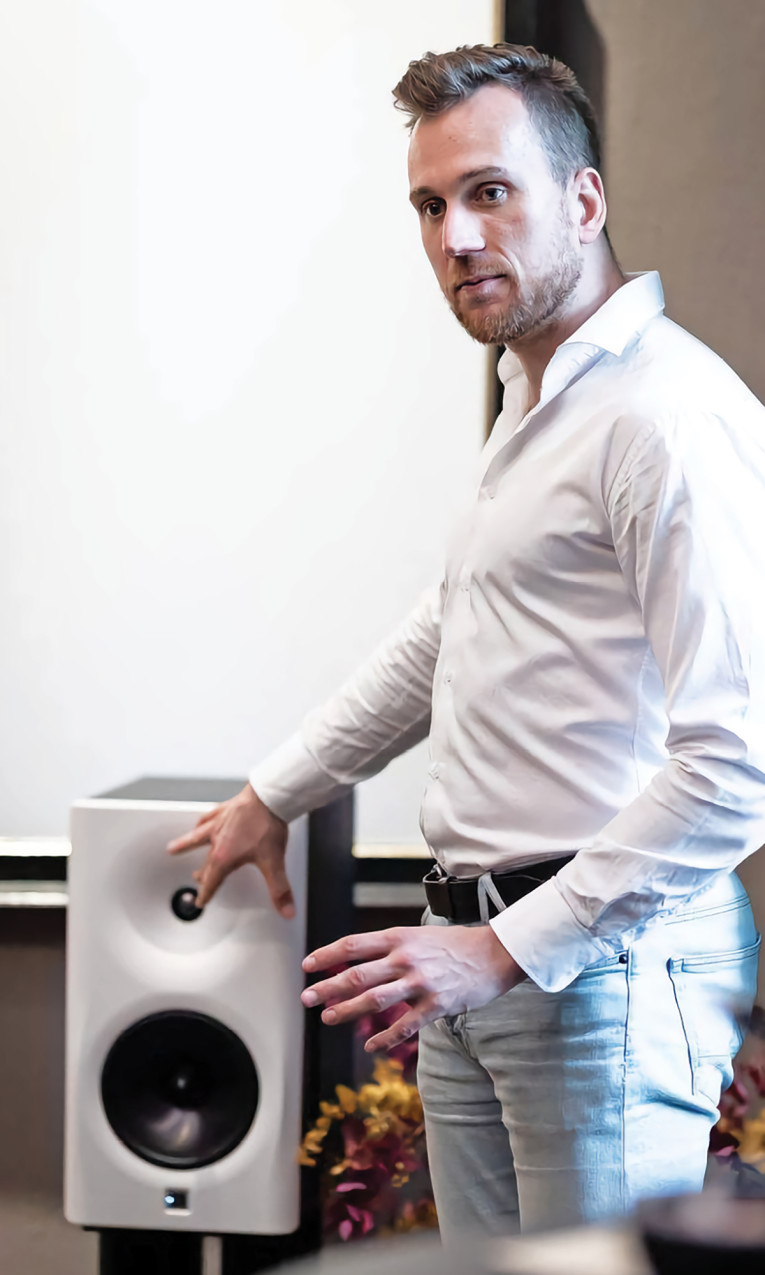
That is, of course, assuming the two speakers’ clocks run at exactly the same speed, which in general will not be the case. The timing in the two speakers will slowly be drifting apart due to very slight differences in their internal clock speed. “We were able to detect that drift, using the sample timestamps and the internal local clock. We use that information to slightly tune the local oscillator through a PLL [phase-locked loop]. This is a simplified view of course but this system allows us to keep the two speakers synchronized to within one audio sample. During the development phase we build a diagnostic tool, which gives us a snapshot of what’s happening on the network when things get out of hand. That was very valuable during the development process but I’m happy to say that nowadays it stays totally silent!”
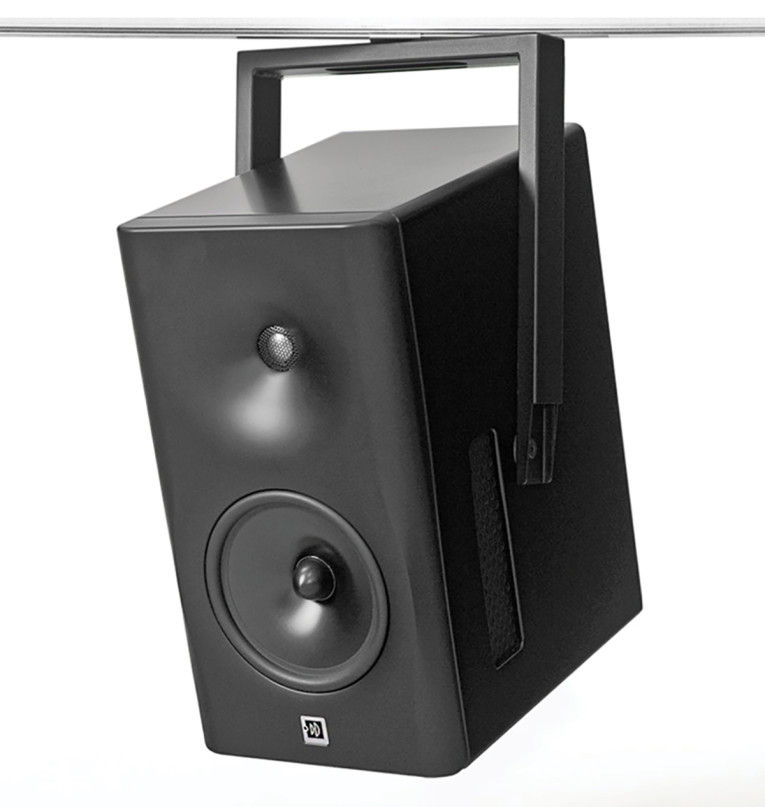
The Sound of Controlled Dispersion
We spent some time listening to a pair of 8cs in Dutch & Dutch’s listening room. I was able to play some of my own favorite music, including well-known tracks from Cassandra Wilson, Mark Curry, and Ulla Meinecke.
I am used to a well-resolving ESL-based system at home, but the 8cs had no problem convincing me with a very realistic, well-balanced, and wideband reproduction with impeccable placement of voices and instruments. The wandering of voices and instruments with changing frequency that so often happens in lesser systems was totally absent in the 8cs, confirming that the team’s efforts to control and shape the dispersion throughout the audio frequency range was spot on.
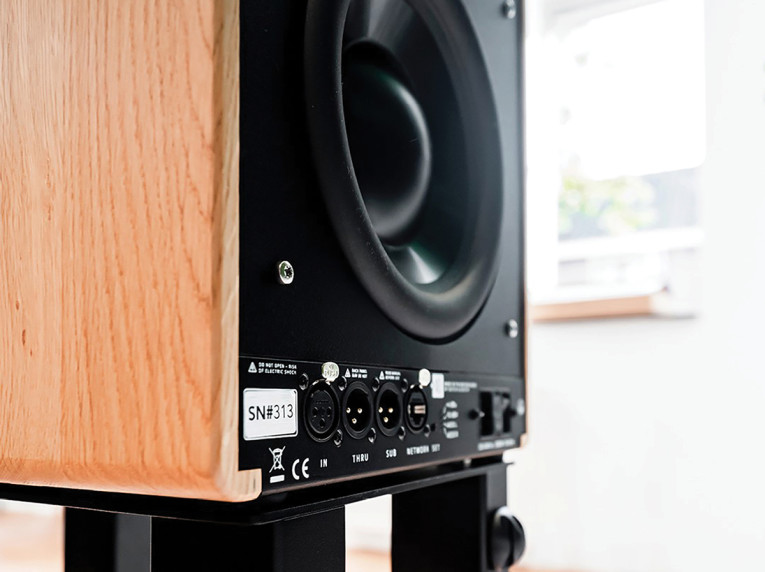
On my way out, after a very informative and enjoyable visit, I chatted with Mo and Mehdi, who were preparing another batch of 8cs to be shipped to waiting customers. In this company’s case, they don’t stop there. Dutch & Dutch offers (and strongly recommends) their Remote Commissioning Service (RCS), availability everywhere in the world.
After the new owner receives his speakers and places them in the intended room, one of the company’s engineers will get in touch and set up a remote TeamViewer session over the Internet to make the necessary measurements. Customers who take the RCS option receive a professional measurement USB microphone. During the interactive session the customer is guided on the procedures, including moving the measurement microphone around the room to gather the data needed to make the right room correction settings. aX
Dutch & Dutch: www.dutchdutch.com
This article was originally published in audioXpress, October 2023




